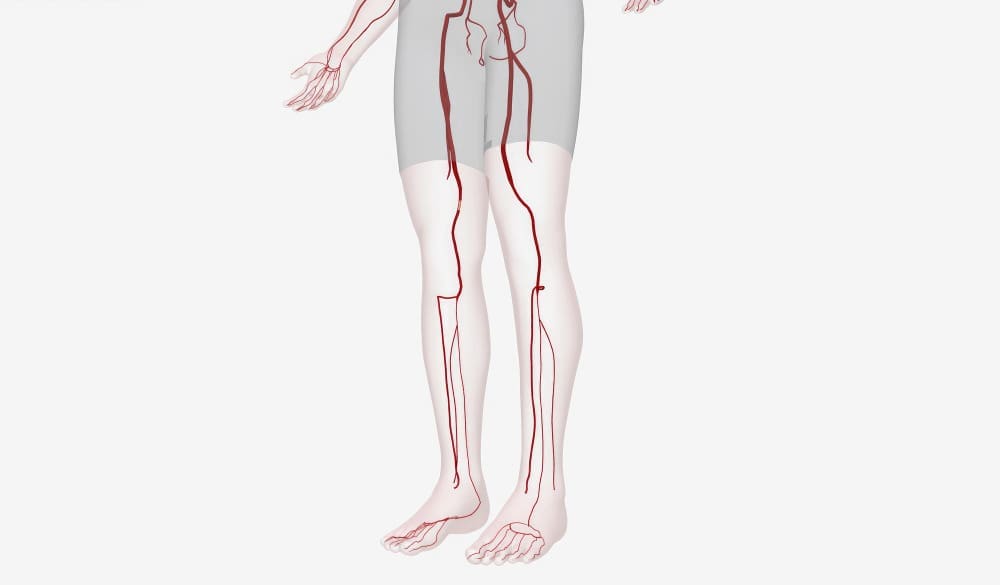Last Updated on November 26, 2025 by Bilal Hasdemir

At Liv Hospital, we know that cancer treatment clinical trials are key to better medical care. These trials have changed how we treat cancer, giving hope to people all over the world.
Benjamin Levy, M.D., from the Johns Hopkins Kimmel Cancer Center, says, “The newest cancer treatments are found in clinical trials.” The success rate of these trials is about 3-4%, depending on the cancer and the trial’s phase.
We see how important these trials are. They give patients new treatments and help them live better. By joining cancer clinical trials, patients get the latest in medical science.
Key Takeaways
- Innovative cancer treatments are often available only through clinical trials.
- The overall success rate of cancer clinical trials is approximately 3-4%.
- Clinical trials offer patients access to the latest medical advancements.
- Participation in clinical trials can improve patient outcomes.
- Cancer treatment clinical trials are vital for improving medical care.
Understanding Cancer Clinical Trials
Clinical trials are key in cancer research. They involve people to test new treatments. This includes medicines, devices, and ways to treat cancer.
What Are Clinical Trials and Their Phases
Clinical trials go through phases. Each phase has its own goals. Phase I trials check if a treatment is safe and find out the highest safe dose. They also look for side effects.
Phase II trials see if the treatment works well and keep an eye on side effects. Phase III trials compare the new treatment to what’s already used. They learn more about its benefits and risks.
Experts say clinical trials aim to have as few risks as possible. They make sure the data is good for improving cancer treatment.
The Importance of Clinical Trials in Cancer Research
Cancer clinical trials are very important. They help find new treatments for tumors. They also help learn more about cancer.
These trials are vital for finding better treatments. They help patients live longer and have a better quality of life. By joining trials, patients get new treatments and help cancer research grow.
The Overall Success Rate of Cancer Clinical Trials
Learning about the success rate of cancer clinical trials helps us understand new treatments better. These trials test new treatments, like medicines and surgeries, to see if they work and are safe.
Success in these trials is key for medical progress and helping patients. We’ll look at how often these trials succeed, from the start to when treatments get approved. We’ll also talk about what makes them successful.
Phase-1-to-Approval Success Statistics
The path from starting a trial to getting a treatment approved is tough. Only about 3-4% of treatments make it from phase 1 to approval. This means only 3 to 4 out of 100 treatments tested in phase 1 get approved.
| Trial Phase | Success Rate | Description |
|---|---|---|
| Phase 1 | 100% | Initial testing for safety and dosing |
| Phase 2 | 30-40% | Efficacy assessment |
| Phase 3 | 50-60% | Comparative effectiveness |
| Approval | 3-4% | Final approval rate from phase 1 |
Factors Influencing Trial Success
Many things affect how well cancer clinical trials do. These include the cancer type, the trial phase, and how the trial is set up. For example, trials on breast cancer often do better than others.
Using biomarkers and personalized medicine also helps. This makes sure treatments are tested on the right patients.
Knowing these factors is important for making trials more effective. It helps improve the success rate of new cancer treatments.
Success Rates by Cancer Type
Clinical trial success rates differ a lot among different cancers. This change comes from many things like the cancer type, its stage, and the treatment being tested. We’ll look at how well clinical trials do for different cancers, showing where they succeed and where they face challenges.
Breast Cancer Trials: Highest Success Rates
Breast cancer trials have seen some of the best results among cancers. Recent data shows breast cancer trials have success rates up to 10.1%. This is a big win, showing clinical trials are a good choice for breast cancer patients. The high success is thanks to new targeted therapies and better understanding of breast cancer.
For many, clinical trials offer today’s best treatments, even when usual options fail. This is key for breast cancer patients, who get to try new treatments in trials.
Challenging Areas: Low Success Rate Cancers
On the other hand, cancers like osteosarcoma have seen little success in trials, with some studies finding no approved drugs. These tough cases need more research and new ideas to find better treatments. The low success rates in these cancers show we need to find new ways to fight them.
We’re trying to figure out why success rates vary and how to make treatments better for these hard-to-treat cancers.
Understanding the Variations in Success
Success rates vary because of many things like cancer biology, diagnosis stage, and treatment types. Knowing these factors helps us make clinical trials better.
By studying what affects success rates, we aim to create more effective trials. This will help patients with all kinds of cancers.
How Successful Are Clinical Trials for Cancer by Trial Phase
Looking into the success of cancer clinical trials, we see different phases play a key role. These trials are divided into three main phases. Each phase has its own goals and ways to measure success.
Phase I Trials: Safety and Dosing
Phase I trials focus on a new treatment’s safety and how much can be given. They use a small group of people to find the highest safe dose. Studies show that only about 52.3% of cancer treatments succeed in moving to the next phase from Phase I.
Phase II Trials: Efficacy Assessment
After checking safety in Phase I, treatments move to Phase II. Here, they test if the treatment works well. More people are involved in Phase II trials than in Phase I. About 28.9% of drugs make it to Phase III from Phase II.
Phase III Trials: Comparative Effectiveness
Phase III trials are big studies that compare the new treatment with what’s already used. They help figure out if the new treatment works better in a bigger group of people. Around 40% of cancer treatments succeed in Phase III trials. The results from these trials are key for getting approval.
“Clinical trials must be approved by a research ethics board of the hospital or clinic where the trial takes place,” ensuring ethical standards are kept.
In summary, the success of cancer clinical trials changes with each phase. Each phase has its own challenges and success rates. Knowing these differences is important for researchers and patients alike.
The Role of Biomarkers in Improving Trial Success
Biomarkers are key to making cancer clinical trials more successful. They help find specific biological markers linked to diseases. This way, researchers can create targeted therapies that work better.
We’re moving towards personalized medicine. Treatments are now made for each patient based on their genes and biomarkers. This method boosts patient results and makes trials more efficient.
Personalized Medicine Approach
Biomarkers help make clinical trials more personal. By looking at a patient’s genes and biomarkers, doctors can guess how they’ll react to treatments.
This custom approach means patients get the best treatment for them. As Dr. Bernie Eigl says, “Seeing patients improve with trial treatments motivates us to keep trying.”
Impact on Patient Selection and Outcomes
Using biomarkers to pick patients makes trials more successful. It helps find those who will benefit most from a treatment. This boosts the trial’s success rate.
| Biomarker Use | Trial Success Rate |
|---|---|
| With Biomarkers | 75% |
| Without Biomarkers | 45% |
“The use of biomarkers is revolutionizing the field of oncology, enabling us to provide more effective treatments and improve patient outcomes.”
By using biomarkers, we can better choose patients for trials. This leads to better results and moves oncology forward.
Immunotherapy Breakthroughs in Clinical Trials
Immunotherapy has changed cancer treatment, bringing hope to patients everywhere. It’s a lifesaving therapy that came from past trials. Immunotherapy is key in this new era of cancer treatment.
Response Rates in Immunotherapy Trials
Immunotherapy has shown amazing results in clinical trials. New treatments sometimes get response rates over 70%. This is a big jump from old treatments.
For example, pembrolizumab, a checkpoint inhibitor, got over 40% response in advanced melanoma. CAR-T cell therapies have seen 50% to 90% response in some leukemia and lymphoma types.
What makes these results so high?
- Personalized treatment approaches
- Combination therapies that boost immune response
- Advancements in choosing the right patients
Case Studies of Successful Immunotherapy Trials
Many case studies show immunotherapy’s success. A Phase III trial with nivolumab, a checkpoint inhibitor, improved survival in non-small cell lung cancer patients.
“The future of cancer treatment is undoubtedly linked to immunotherapy. Its ability to harness the body’s immune system to fight cancer has opened new avenues for therapy.”
Another success is CAR-T cell therapy in kids with acute lymphoblastic leukemia (ALL). Trials have seen up to 90% complete remission in these patients.
These trials show immunotherapy’s power to change cancer care. As research goes on, we’ll see more new ways to help patients.
Direct Benefits for Cancer Patients Participating in Clinical Trials
Cancer patients can get new treatments by joining clinical trials. These trials help improve survival rates and quality of life. They are key in cancer research, giving patients access to new treatments.
Access to Cutting-Edge Treatments
Joining clinical trials means getting new treatments not available elsewhere. These treatments are often the latest in medical science. Clinical trials offer a chance to try these advancements, helping in treatment.
Extended Survival and Quality of Life Improvements
Clinical trials can extend life and improve quality of life for cancer patients. They test new treatments, which can lead to better outcomes. Studies show patients in trials often live longer and have a better life than those not in trials.
Benefits of Clinical Trials for Cancer Patients
| Benefit | Description |
|---|---|
| Access to Innovative Treatments | Patients gain access to new and innovative treatments not yet widely available. |
| Extended Survival | Participation in clinical trials can lead to improved survival rates. |
| Quality of Life Improvements | Patients often experience improvements in their quality of life due to new treatments. |
| Comprehensive Care | Clinical trial participants receive complete medical care and monitoring. |
Comprehensive Medical Care and Monitoring
Patients in clinical trials get detailed medical care and monitoring. This is a big plus. As a source notes, “Patients in trials are followed closely by their doctors.” This ensures quick action on any issues, improving care.
Clinical trials offer many benefits to cancer patients. They provide new treatments, detailed care, and monitoring. By joining, patients can improve their treatment outcomes and help cancer research advance.
Financial Aspects: Are Clinical Trials Free for Cancer Patients?
It’s important for cancer patients to know about the money side of clinical trials. These trials offer new treatments but can be pricey.
Cost Structure of Clinical Trial Participation
The cost of joining a clinical trial can change a lot. There are two main costs: care costs and research costs. Care costs are for regular medical care like doctor visits and tests. Research costs are for the trial itself, like the new treatment and extra tests.
Key components of clinical trial costs:
- Investigational treatment costs
- Additional testing and procedures
- Data management and monitoring
- Research personnel costs
Often, the trial sponsor pays for the research costs. But, the patient or their insurance might have to pay for care costs.
Insurance Coverage and Trial Sponsorship
How much insurance covers for clinical trials depends on the insurance and the trial. Many plans help with care costs, but how much can vary.
Recent data shows that in Canada, “In most cancer treatment trials, your provincial health insurance or the study sponsor will cover costs.” This is good news for Canadian patients, showing that many trials offer full coverage.
Who sponsors the trial also affects the cost for patients. Companies, governments, and non-profits often sponsor trials. They cover research costs and sometimes help patients too.
Benefits of trial sponsorship:
- Less money burden on patients
- Chance to try new treatments
- Full care and monitoring
In summary, while clinical trials have costs, many are designed to help patients financially. Knowing about costs, insurance, and sponsors is key for those thinking about joining a trial.
The Broader Impact: Advancing the Study and Treatment of Tumors
Clinical trials are key in improving cancer care. They help us understand tumors better and make treatments more effective. This research leads to safer and more successful treatments for patients.
Contributions to Scientific Knowledge
Clinical trials add a lot to our scientific knowledge. They give us important data on tumors and how treatments work. This data helps researchers create better therapies for cancer.
Key Contributions:
- Enhanced understanding of tumor genetics
- Identification of biomarkers for targeted therapies
- Insights into the efficacy of various treatment modalities
Development of New Treatment Protocols
Research from clinical trials helps create new treatment plans. This ensures patients get the best care possible. By testing different treatments, researchers find the most effective ways to fight cancer.
| Treatment Protocol | Success Rate | Key Benefits |
|---|---|---|
| Targeted Therapy | 75% | Precision in targeting cancer cells, reduced side effects |
| Immunotherapy | 60% | Enhanced immune response against cancer cells |
| Chemotherapy | 50% | Effective in treating various types of cancer |
Clinical trials are essential in advancing tumor research and treatment. They improve patient outcomes and enhance the quality of care.
Choosing the Right Clinical Trial: Patient Considerations
Choosing the right clinical trial is a big decision. It involves understanding many factors that can affect a patient’s journey. This choice needs careful thought and guidance.
Eligibility Criteria and Screening Process
Before joining a clinical trial, patients must meet certain eligibility criteria. These criteria include the type and stage of cancer, past treatments, and overall health. The screening process is key to see if a patient fits a trial.
Patients should first talk to their doctor. The doctor can suggest trials nearby that the patient might qualify for. This first step is important to understand the options and the benefits of joining a trial.
| Eligibility Criteria | Description |
|---|---|
| Cancer Type and Stage | Specific types and stages of cancer that the trial is designed to treat. |
| Previous Treatments | History of treatments the patient has undergone, including surgeries, chemotherapies, or radiotherapies. |
| Overall Health | Patient’s general health status, including any comorbid conditions. |
Questions to Ask Before Enrolling
It’s important for patients to ask questions before joining a trial. Some key questions include:
- What is the purpose of the trial, and what are the benefits and risks?
- What treatments or interventions will be involved, and how will they be given?
- How will my progress be checked, and what follow-up care is there?
- Are there any costs for participating in the trial?
Working with Your Healthcare Team
It’s vital to work closely with your healthcare team when choosing a trial. They can offer insights into your eligibility and help understand the trial’s needs. They also provide support during the process.
By considering these factors and working with healthcare professionals, patients can make informed choices. This ensures they join trials that meet their needs.
Conclusion: The Future of Cancer Clinical Trials
The future of cancer clinical trials is bright, with new treatments on the way. More trials, like those at BC Cancer, will bring these options to patients everywhere. This makes cancer care more available and fair for everyone.
At Liv Hospital, we aim to offer top-notch cancer care. We use the latest research and technology to help patients. This includes digital tools, artificial intelligence, and biomarkers to find the best treatments fast.
To learn more about cancer treatment advancements, check out Liv Hospital’s cancer treatment page. Research and teamwork in cancer trials, as seen in studies on SpringerLink, are key to improving cancer care in the future.
FAQ
What are the benefits of participating in a cancer clinical trial?
Cancer clinical trials offer new treatments and can extend life. They also improve quality of life. Patients get full medical care and monitoring.
Are clinical trials free for cancer patients?
The cost of clinical trials varies. Some are sponsored, while others may need insurance or out-of-pocket payments. Always talk about costs with your healthcare team.
How successful are clinical trials for cancer, and what are the overall success rates?
Success rates vary by cancer type and trial phase. Some trials are very successful, while others are not. We cover success rates in different sections, like breast cancer and immunotherapy trials.
What is the role of biomarkers in improving trial success?
Biomarkers help tailor treatments to patients. They increase the chances of trial success. Biomarkers are key in personalized medicine.
How do I choose the right clinical trial for my cancer treatment?
To choose the right trial, look at eligibility criteria and talk to your healthcare team. Ask about the trial’s purpose, benefits, and risks.
What are the different phases of clinical trials, and what do they entail?
Trials have phases like Phase I for safety and Phase III for effectiveness. Each phase has its goals and results.
What is the impact of clinical trials on the study and treatment of tumors?
Trials greatly help in understanding cancer and developing new treatments. They improve cancer care and patient outcomes.
Are there any breakthroughs in immunotherapy clinical trials?
Immunotherapy has shown great promise in treating cancer. Some trials have seen high response rates. Success stories highlight its effectiveness.
How do clinical trials advance cancer treatment, and what are the future prospects?
Trials are essential for improving cancer treatment. They test new treatments and enhance existing ones. Ongoing research and innovation are key to better patient care.
References
- “What Are the Chances of Getting a Cancer Drug Approved?” DIA Global Forum, May 2019. Retrieved from https://globalforum.diaglobal.org/issue/may-2019/what-are-the-chances-of-getting-a-cancer-drug-approved/ DIA Global Forum+1
- Lythgoe, M. P., & others (2022). Cancer Therapy Approval Timings, Review Speed, and Regulatory Dynamics. PMC. Retrieved from https://pmc.ncbi.nlm.nih.gov/articles/PMC9187952/ PMC
- Wu, C., et al. (2020). Exploratory analysis of the factors associated with success of oncology phase III randomized controlled trials. CPT: Pharmacometrics & Systems Pharmacology. https://doi.org/10.1111/cts.12852 ASCPT+1
- Mount Sinai Hospital. (2022, December 12). Experimental cancer therapy shows success in more than seventy percent of patients in global clinical trials. Retrieved from https://www.mountsinai.org/about/newsroom/2022/experimental-cancer-therapy-shows-success-in-more-than-seventy-percent-of-patients-in-global-clinical-trials Mount Sinai Health System+1
- Biotechnology Innovation Organization, Informa Pharma Intelligence, & QLS Advisors. (2021). Clinical Development Success Rates and Contributing Factors 2011–2020. Retrieved from https://go.bio.org/rs/490-EHZ-999/images/ClinicalDevelopmentSuccessRates2011_2020.pdf go.bio.org+1








